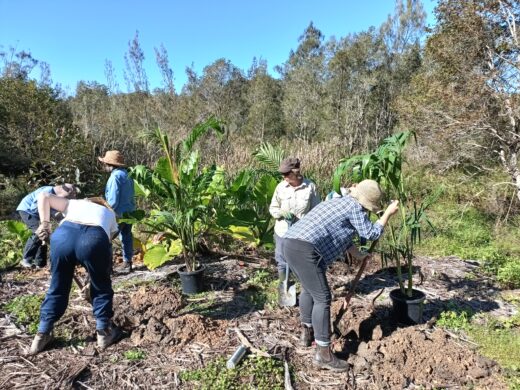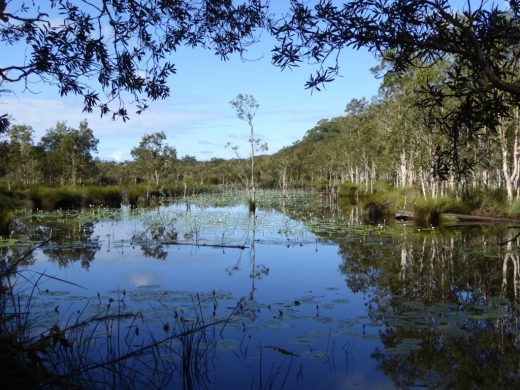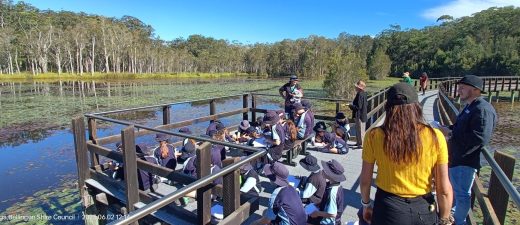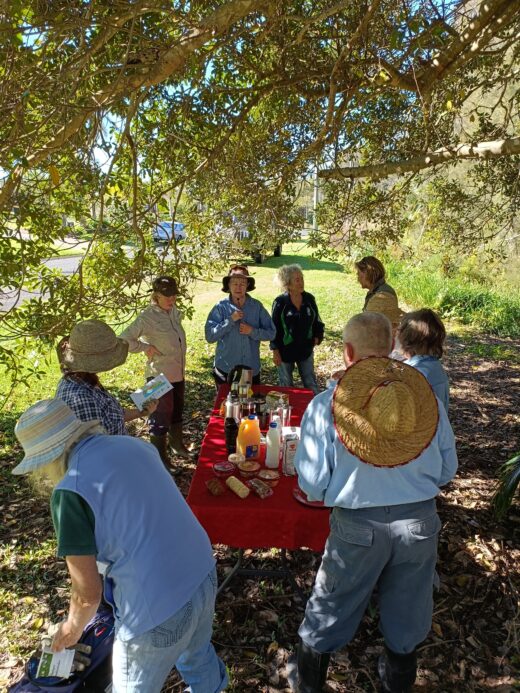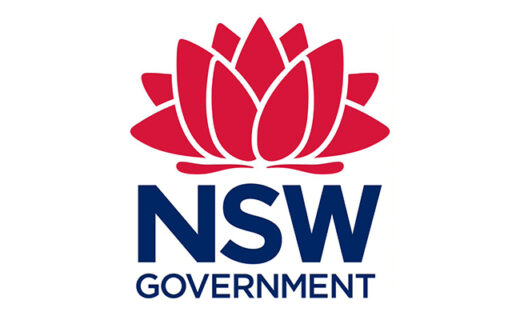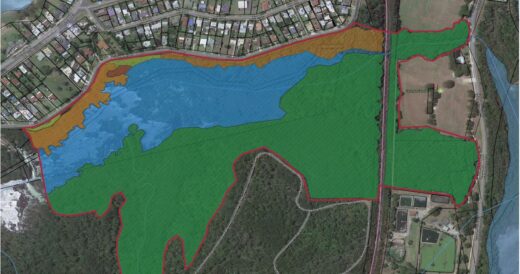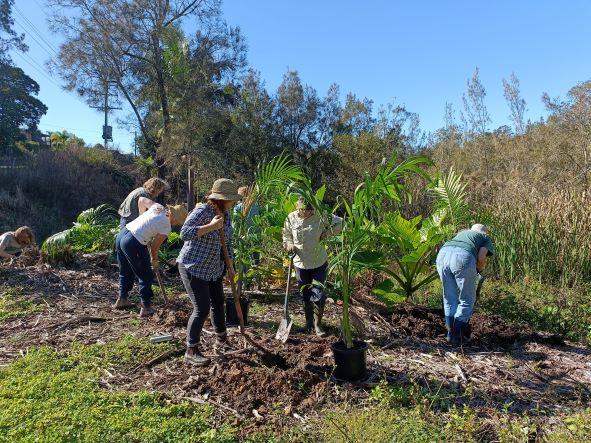
Nyanuum-gaaba (western wetlands) Landcare site:
Engaging the community in improving the condition of the Urunga coastal freshwater wetland – an endangered ecological community.
Local residents can help by joining the regular working bees, disposing of garden cuttings at home, or in the green bin, keeping an eye out for particularly invasive weeds at home or in the wetlands, and keeping cats indoors, especially at night.
One hundred and sixty bird species have been spotted in the various ecosystems in the area. You can read the list, and see pictures and the months they have been spotted here . You can also join ebird and download the app to add to the list.
The native vegetation along five hundred metres of degraded riparian zone bordering the wetland is being restored, with a combination of funded contractors and regular working bees by the local landcare group (join them), assisted by other residents at times. The project funding enabled large, dangerous invasive trees to be removed, and the most impenetrable thickets of weeds to be controlled quickly, making the local landcare group’s work safer and achievable.
The natural regeneration was so successful that significantly less replanting than anticipated was needed, allowing for more intensive weed management. As a result, three endangered ecological communities (Swamp Sclerophyll Forest on coastal floodplain, Littoral Rainforest, and Freshwater wetlands on coastal floodplain) have been enhanced, improving habitat for the many animals and birds who live in, or visit this area. Wonga pigeons and Black-necked Storks are just two of the birds you might be lucky enough to see.
Walking, planting, weeding and bird ID workshops were included in the project, and small interpretive signs are being created, as well as a larger one by local school students and Frances Witt, a proud Gumbaynggirr local. The larger sign also highlights our new Gumbaynggirr name for the site, named in collaboration with the Muurrbay Language and Cultural Cooperative (more on that project).
This project is an excellent example of the collaboration possible between volunteers and contractors, and also of the ability to use an initial source of funding to attract more funding to expand a project’s scope, effectively bringing various funding bodies into collaboration, and various contractors, coordinated by Landcare. The presence of an overall vegetation management plan for the area was the key to showing various agencies how their contributions fit together to enhance the wetland system as a whole.
Local Council’s Biodiversity and Invasive Species Officers collaborate with Landcare across that management plan area, and volunteers from the three local landcare groups (Station Creek, Wetlands, Urunga Lake) within it also assist each other’s projects from time to time. Some of the other funding sources obtained, and the ongoing work of the local landcare group (join them), will ensure that the wetland continues to regenerate.
The initial contractor work and workshops were funded by the NSW Environmental Trust Restoration and Rehabilitation program. From this solid starting point, work is being expanded through funding for expanding grey headed flying fox winter forage, LLS funding for the restoration of the creek into which the wetlands flows.

